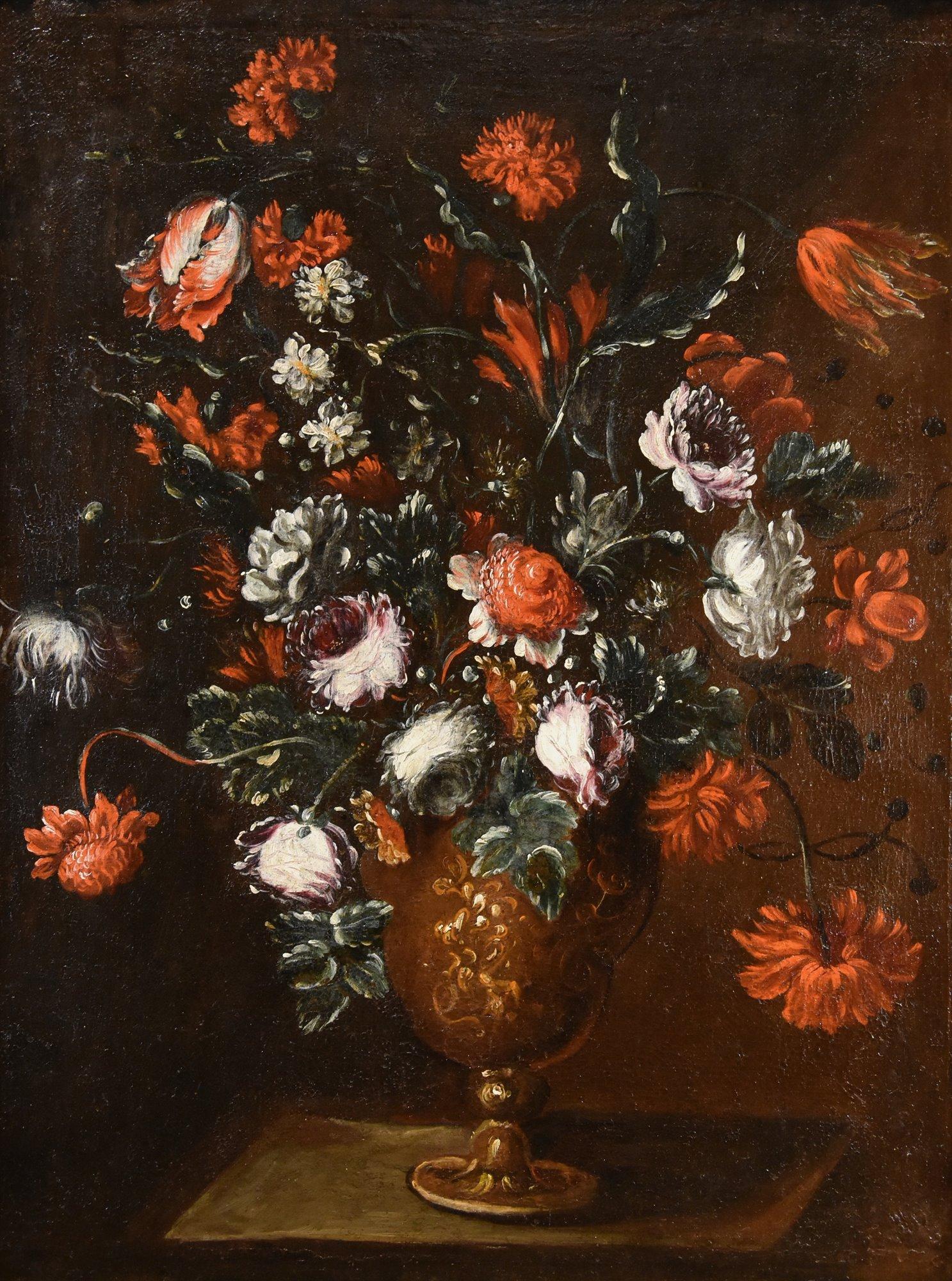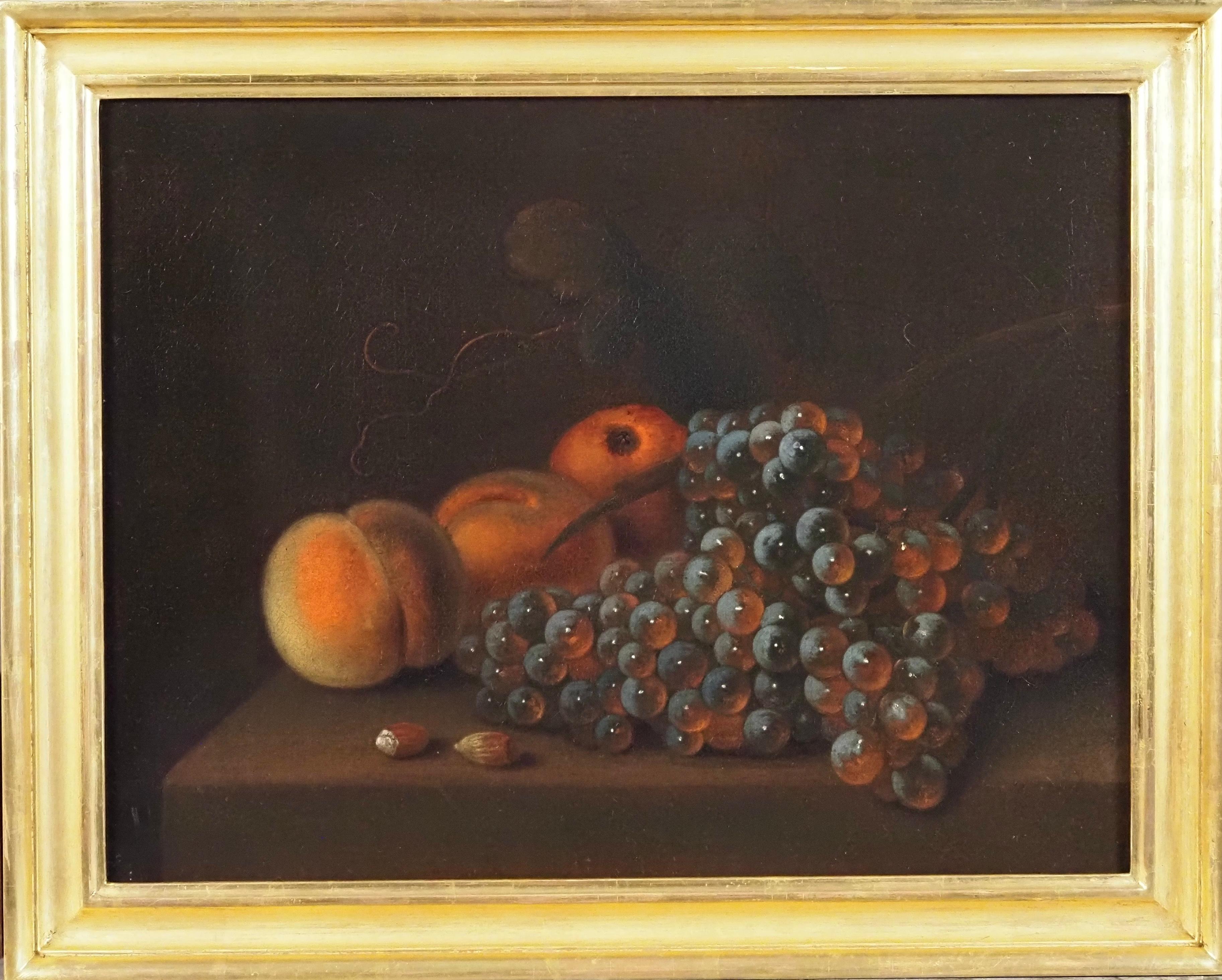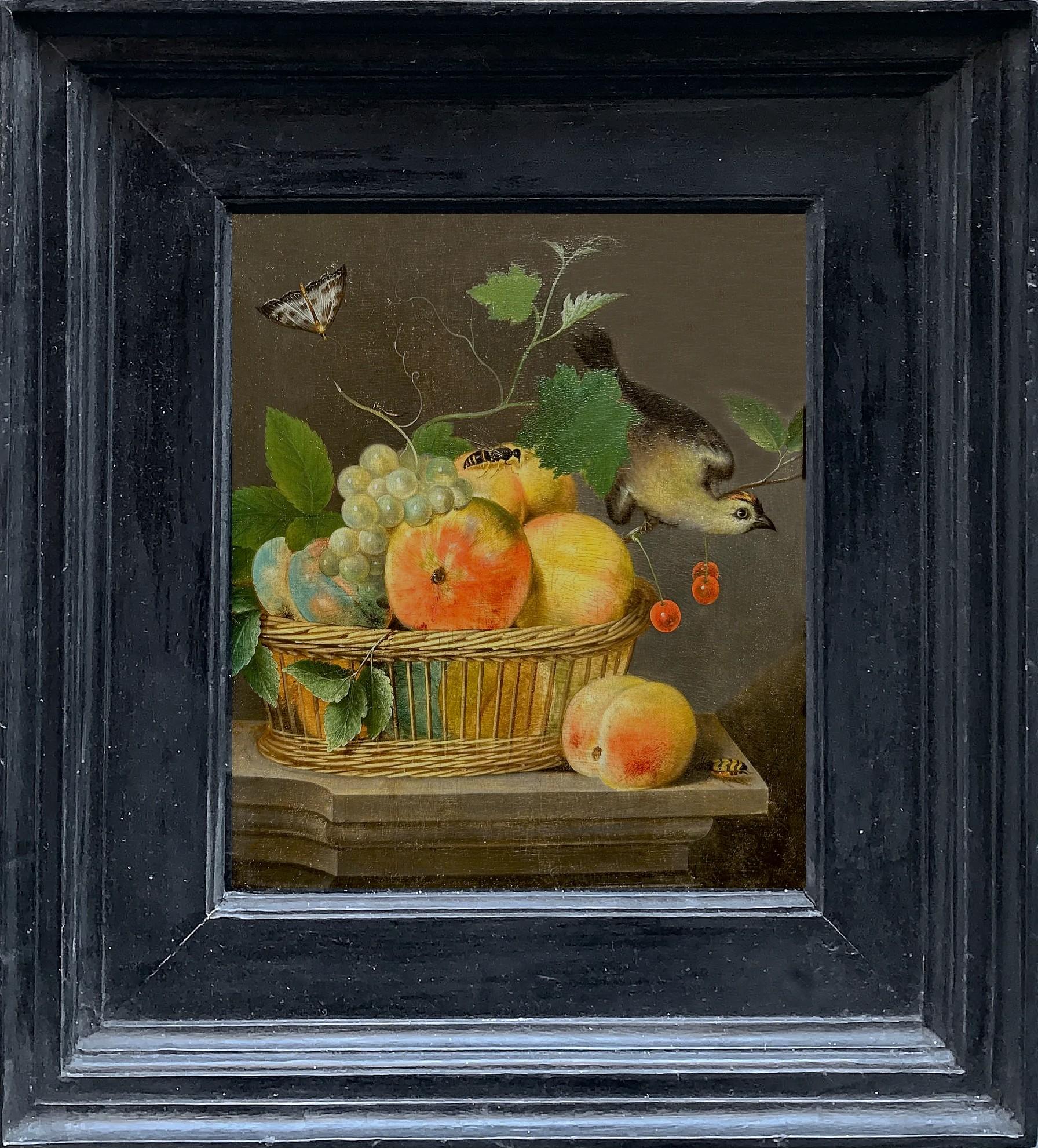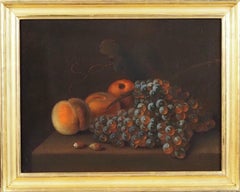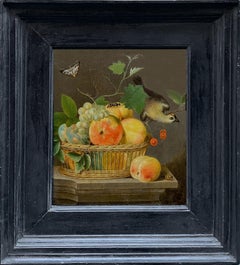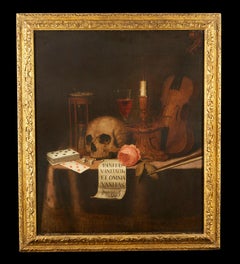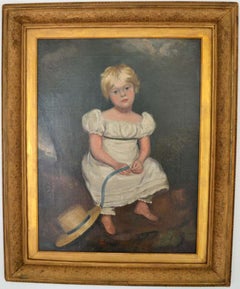Flower Still Life Old Master 17th century Italy Paint Oil on canvas Quality Art
View Similar Items
Want more images or videos?
Request additional images or videos from the seller
1 of 20
Felice Fortunato Biggi, known as Felice de 'Fiori (Parma 1650 - Verona 1700 ca.), cercle ofFlower Still Life Old Master 17th century Italy Paint Oil on canvas Quality Art1670-1720
1670-1720
Price:$5,973.27
$8,619.44List Price
About the Item
- Creator:Felice Fortunato Biggi, known as Felice de 'Fiori (Parma 1650 - Verona 1700 ca.), cercle of (1650 - 1700)
- Creation Year:1670-1720
- Dimensions:Height: 35.83 in (91 cm)Width: 46.46 in (118 cm)
- Medium:
- Movement & Style:
- Period:
- Condition:
- Gallery Location:Riva del Garda, IT
- Reference Number:1stDibs: LU98816998312
About the Seller
4.9
Gold Seller
Premium sellers maintaining a 4.3+ rating and 24-hour response times
Established in 2017
1stDibs seller since 2018
247 sales on 1stDibs
Authenticity Guarantee
In the unlikely event there’s an issue with an item’s authenticity, contact us within 1 year for a full refund. DetailsMoney-Back Guarantee
If your item is not as described, is damaged in transit, or does not arrive, contact us within 7 days for a full refund. Details24-Hour Cancellation
You have a 24-hour grace period in which to reconsider your purchase, with no questions asked.Vetted Professional Sellers
Our world-class sellers must adhere to strict standards for service and quality, maintaining the integrity of our listings.Price-Match Guarantee
If you find that a seller listed the same item for a lower price elsewhere, we’ll match it.Trusted Global Delivery
Our best-in-class carrier network provides specialized shipping options worldwide, including custom delivery.More From This Seller
View AllDe Wit Flowers Still life Paint Oil on canvas 18th Century Flemish Cupids Art
Located in Riva del Garda, IT
Jacob De Wit (Amsterdam, 1695 - 1754) attributable/ workshop
Pair of Cupids with Garland of Flowers
Oil on canvas
91 x 103 cm. - Framed 104 x 115 cm.
Provenance: Christie's (London, Old master Painting 12.12.1996) lot 82
This magnificent composition depicts two cupids holding a garland of flowers, placed on a fine architecture with bas-reliefs and masks, presumably the top of a fountain.
One of the two cupids sympathetically holds a part of it with his hands, while his head turns towards the viewer; the second cupid, on the other hand, must have clumsily broken the thread holding its end, and is sitting sullenly with a torch and a tear streaking his chubby cheek.
The work, given its stylistic features and compositional taste, can be attributed to the Flemish artist Jacob de Wit (Amsterdam, 1695 - 1754), or to an artist from his workshop, with his typical triumphal and opulent style, which reveals clear influences from Rubens and Van Dijck, but also from Gerard de Lairesse...
Category
18th Century Old Masters Paintings
Materials
Oil
$14,909 Sale Price
20% Off
Flower Still-life Van Everbroeck Paint 17th Century Oil on canvas Old master Art
Located in Riva del Garda, IT
Frans van Everbroeck (Antwerp, ca. 1628 - London or Antwerp 1676/1693)
attributed
A stone cartouche surrounded by garlands of flowers with tulips, roses, daffodils, peonies and daisi...
Category
17th Century Old Masters Paintings
Materials
Oil
$11,803 Sale Price
20% Off
Still-Life Flower Landscape Castelli Paint Oil on canvas Old master Italian art
By Giovanni Paolo Castelli detto Spadino
Located in Riva del Garda, IT
Still life in a landscape with fruit and game
Work of the late Roman Baroque of the late seventeenth / eaarly eighteenth century
attributable to Giovanni Paolo Castelli, known as Spadino (Rome, 1659 - 1730)
oil on canvas
62 x 76 cm., Framed 90 x 109 cm.
An open-air setting, with a hilly landscape gash that opens into the distance in the central part, surrounds our beautiful canvas, which showcases a rich selection of game and fruit, arranged in the foreground near the point of view of the observer, occupying a large part of the visual field with their bright and festive colors.
The style and quality of the work, like the pictorial technique of this still life, characterized by subtle luminous vibrations and a lively chroma, make it attributable to the Roman Giovanni Paolo Castelli, known as Lo Spadino (Rome, 1659 - 1730), one of the most important specialists of this pictorial genre of late Baroque Rome, which had a very successful career between the 17th and 18th centuries.
Analyzing the rich and heterogeneous catalog of the Roman master, in fact, our canvas can be included among his rare works which, alongside a selection of fruit - among which stand out large melons, ripe figs, dark grapes and plums - we see a game advert, presumably as requested by a patron who loves hunting. Next to various birds, spoils of a profitable hunting trip, there is also a small green woodpecker, with the characteristic red spot on the head, and a nice rodent that terminates from behind the trunk.
The painter abandons himself to a skilful and brilliant chromatic texture of the surfaces, through a pictorial material rendered with exceptional vibration in its luminous and 'tactile' body, fully respecting the taste of the full Roman Baroque.
The quality appears excellent, distinguished by a skilful and brilliant chromatic texture of the surfaces, which appear almost vibrant thanks to a skilful drafting of the pictorial material.
Inevitable and evident are the Flemish suggestions, which had influenced the Roman Baroque still life, in particular the work of Abraham Brueghel...
Category
Late 17th Century Old Masters Paintings
Materials
Oil
$15,417 Sale Price
20% Off
Pieter Casteels III 'Signed' Floral Still Life Old master Paint 18th Century Art
By Pieter Casteels III (Antwerp 1684 - 1749 Richmond)
Located in Riva del Garda, IT
Pieter Casteels III (Antwerp 1684 - 1749 Richmond) circle
Floral still life
Signed lower left, on the stone: P Casteels
About 1730
Oil painting on...
Category
18th Century Old Masters Paintings
Materials
Oil
$15,375 Sale Price
40% Off
Still Life Vanitas Noletti Paint Oil on canvas Old master 17th Century Italian
Located in Riva del Garda, IT
Francesco Noletti known as the Maltese (Malta 1611-Rome 1654) Workshop/circle of
Still life with musical instruments, toys, armour, textiles and precious objects
Oil on canvas (52 x 78 cm. - in frame 71 x 102)
This painting, of beautiful scenic effect, depicts a still life composed of a rich display of precious objects, arranged with an apparent disorder, one part on a table and the other on the floor, all theatrically behind a hanging drape from which tassels swing.
Among the objects, our author has reproduced we can see parts of a parade armour with gold borders, jugs and plates...
Category
17th Century Old Masters Paintings
Materials
Oil
$9,566 Sale Price
20% Off
Flowers Still-life Scacciati 17th Century Paint Oil on canvas Old master (2/3)
Located in Riva del Garda, IT
Andrea Scacciati (Florence 1642-1710)
Composition of flowers within embossed vase (2 of 3)
oil on canvas
130 x 90 cm
In antique frame 145 x 105 cm.
Work with expertise by Prof. Emi...
Category
17th Century Old Masters Paintings
Materials
Oil
$13,666 Sale Price
20% Off
You May Also Like
Still life of fruit and nuts
Located in Stoke, Hampshire
James Shaw (fl.1769-1784)
Still life of fruit and nuts
Oil on canvas
Canvas Size - 13 1/2 x 17 3/4 in
Framed Size - 16 1/4 x 20 1/2 in
Born in Sedgley in Staffordshire, it is unclea...
Category
18th Century Old Masters Still-life Paintings
Materials
Oil
$2,727 Sale Price
54% Off
Still Life of Fruit in a Wicker Basket with Bird
Located in London, GB
Gaspar Peeter Verbruggen
1664-1730
Still Life of Fruit in a Wicker Basket with Bird
Oil on oak panel
Image size: 8 1/4 x 7 1/2 inches (21 x 19 cm)
Contemporary Dutch ebonised style f...
Category
17th Century Old Masters Still-life Paintings
Materials
Oak, Oil, Panel
A Vanitas still life
By Evert Collier
Located in Stoke, Hampshire
Attributed to Evert Collier (1642-1708)
A vanitas still life
Oil on canvas
Canvas Size 30 x 25 in
Framed Size 29 x 34 in
Evert Collier (a...
Category
17th Century Old Masters Still-life Paintings
Materials
Oil
$9,301 Sale Price
30% Off
Young Girl after Sir Thomas Lawrence, Regency portrait painting
Located in Brecon, Powys
Charming work in the Regency style, mid 19th Century after Sir Thomas Lawrence. High quality painting. Old Christie's Stencil to verso. Would grace any home, suitable for contempor...
Category
Mid-19th Century Old Masters Portrait Paintings
Materials
Canvas, Oil
Still Life Arrangement - Dutch Old Master 17thC art oil painting fruit butterfly
By Leendert de Laeff
Located in London, GB
A fine Dutch still life Old Master by Leendert de Laeff which is signed and dated 1664. This oil on canvas on panel depicts a still life of fruit with insects and butterflies. A supe...
Category
17th Century Old Masters Still-life Paintings
Materials
Oil
Classical Still Life Study Of Flowers in Vase Elaborate Grand Gilt Frame
Located in Cirencester, Gloucestershire
Rima (English, 20th century) *see notes below
signed oil on board, unframed
board: 31 x 24 inches
provenance: UK collection
The painting has some scuffs and scratches but is essentia...
Category
20th Century Old Masters Still-life Paintings
Materials
Oil
$1,419 Sale Price
79% Off
Recently Viewed
View AllMore Ways To Browse
Mario Nuzzi
Pink Narcissus
P Fortunato
Pacific Northwest Artists
Saint George Sculpture
Village Girls
Antique Cow Paintings
Floral Painting On Black Background
Newark Nj
Oil Painting Lewis
Small Dutch Still Life Painting
Voyage London
West Indies Art
Woman In Boat
17th Century Saint Paintings
1919 Dress
1974 Watches
Age Of Innocence
